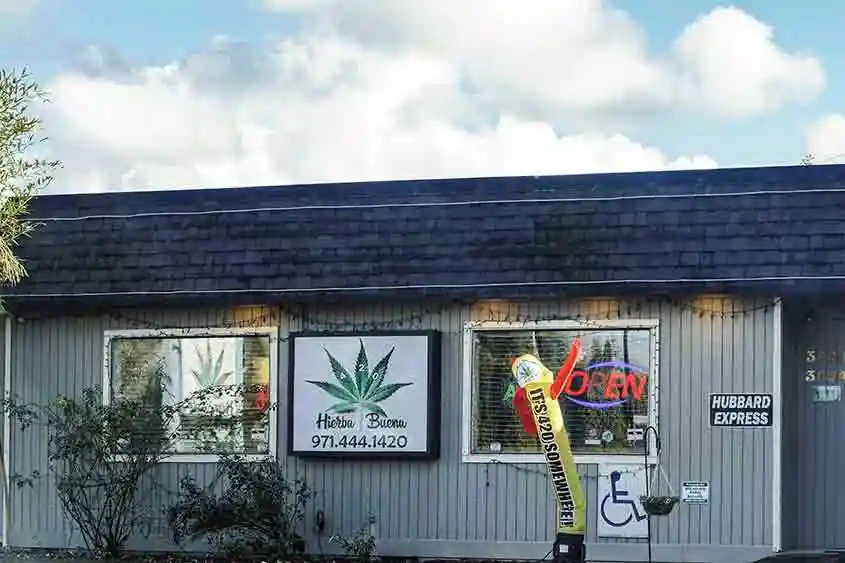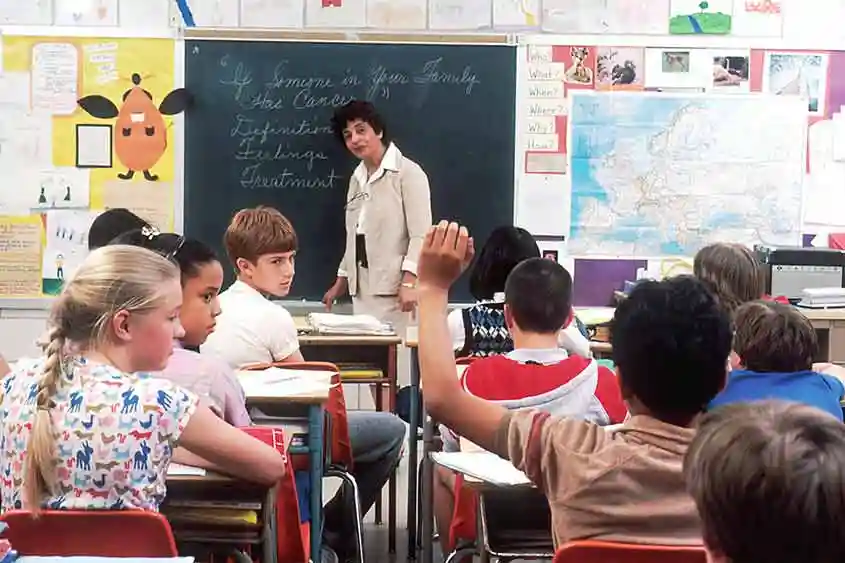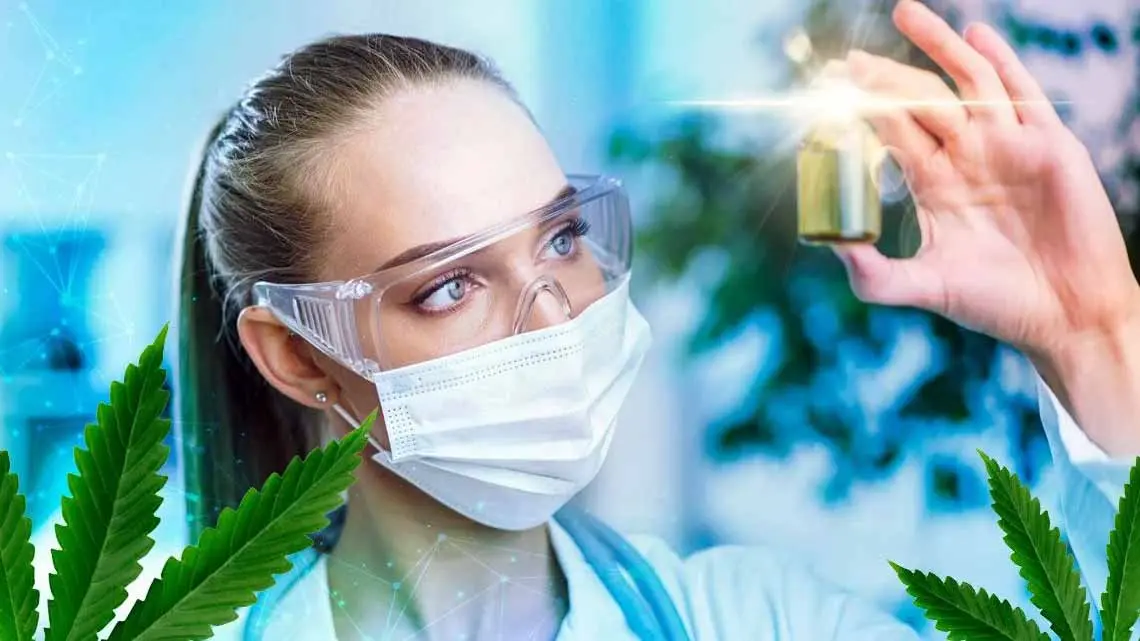With more and more US states legalizing cannabis, medical marijuana education in schools is on the rise. The wave of legalization has not only increased accessibility but also sparked a pressing need for comprehensive education on cannabis. This educational shift is crucial as it aims to equip students with accurate information about the benefits and risks associated with medical marijuana. By incorporating this topic into school curricula, educators are acknowledging the growing relevance of cannabis in society. Today, there is a need to prepare students to navigate a landscape where cannabis use is more common and accepted.
This broader societal change reflects an evolving perspective toward understanding and managing the implications of cannabis use, both medically and recreationally. Historically, cannabis was shrouded in controversy and misinformation, often stigmatized and criminalized. However, as scientific research continues to unveil its therapeutic potential, there is a growing recognition of cannabis as a legitimate medical treatment for various conditions. Concurrently, the shift in recreational cannabis laws signifies a move toward a more liberal and informed approach to drug policy. As these changes unfold, medical marijuana education becomes pivotal in fostering a well-informed public. This educational transformation not only addresses the medical aspects of cannabis. It also integrates discussions on its legal, social, and ethical dimensions, creating a holistic approach to cannabis education.
The California Effect

A Surge in Interest
After California legalized marijuana in 2016, the state experienced a dramatic surge in interest. The legalization prompted a rush of activity as residents eagerly sought to understand and access this newly legal substance. Long lines formed outside medical marijuana dispensaries, with scenes reminiscent of the excitement surrounding the launch of a new gadget! This phenomenon was not unique to California; similar scenes played out in other states that had also embraced cannabis legalization. The visible demand underscored the keen interest and the latent desire for legal access to cannabis products.
Increased Visibility and Accessibility
The legalization of marijuana in California significantly increased the visibility and accessibility of cannabis. Advertisements for dispensaries and cannabis products became commonplace, appearing on billboards, online platforms, and print media. Conversations about marijuana once took place in hushed tones or behind closed doors! Now, they began to occur openly in various public and private settings. This shift in the attitude played a critical role in normalizing cannabis use and sparking curiosity among a broader audience.
Widespread Awareness and Exploration
As cannabis became more accessible, people of all ages and backgrounds started to explore its legal and medical applications. The buzz generated by legalization led many to seek more information. Enthusiasts started doing online research, attending educational seminars, or simply engaging in discussions with knowledgeable friends and family members. This blossoming awareness was a significant departure from the past, where misinformation and stigma often clouded public perception of cannabis. Today, medical marijuana education in schools helps teenagers stay informed on the positive uses of cannabis.
The Role of Medical Marijuana Cards
In states with legal medical marijuana, individuals began registering online for medical marijuana cards. These cards allowed patients to legally purchase cannabis from licensed dispensaries or through home delivery services. The process of obtaining a medical marijuana card involves consultations with healthcare providers. Here, patients could discuss their conditions and explore whether cannabis might be a suitable treatment option. A formalized and regulated approach helped further legitimize medical marijuana use. All in all, it ensured that patients could access cannabis in a safe and controlled manner.
A Ripple Effect Across States
California’s experience with marijuana legalization created a ripple effect across other states considering similar measures. The state’s robust regulatory framework, economic benefits, and the public’s enthusiastic response provided a blueprint for other states to follow. As more states observed California’s successes, they adapted their approaches to better fit their unique demographics and political climates. This iterative process of learning and adaptation contributed to the steady rise in the number of states legalizing cannabis. Finally, states began integrating cannabis awareness into their public health and education systems.
Marijuana Abuse Concerns

Prevalence of Marijuana Abuse
Despite the rising awareness of marijuana across numerous states, substance abuse remains a significant issue in the United States. Marijuana abuse, in particular, is prevalent and continues to increase, raising alarms among public health officials and educators. The widespread availability and changing perceptions of cannabis have contributed to its increased use, especially among teenagers. Adolescents are particularly vulnerable as they navigate the complexities of peer pressure, identity formation, and the allure of experimentation. The normalization of cannabis use can sometimes blur the lines between medicinal use, recreational use, and abuse. As a result, it is more challenging than ever before, to address these issues effectively.
Risks for Teenagers
The trend of rising marijuana use among teenagers is particularly concerning because of the potential long-term consequences. Teens who smoke marijuana are at a higher risk of developing dependencies. That goes not just with cannabis but also with other substances as they grow older. Research indicates that early exposure to marijuana can alter brain development, affecting areas responsible for memory, learning, and impulse control. These changes can lead to cognitive impairments and increase the likelihood of addiction. Furthermore, marijuana use during adolescence can lead to a range of adverse outcomes. It could be poorer academic performance, mental health issues, and impaired social functioning.
Evolving Drug Prevention Education
Amid these challenges, one positive development is the substantial evolution of drug prevention education in schools. In the 1980s, ‘Just Say No’ campaigns relied on scare tactics and simplistic messaging. On the other hand, contemporary medical marijuana education programs have adopted a more sophisticated and nuanced approach. Modern programs emphasize critical thinking, informed decision-making, and a comprehensive understanding of the risks and benefits associated with drug use.
From Scare Tactics to Informed Decision-Making

The shift from scare tactics to informed education marks a significant improvement in how schools address substance abuse. The ‘Just Say No’ campaigns (with their dramatic and fear-based messages) often failed to resonate with students. All in all, they failed to equip teens with the skills needed to navigate real-life situations. In contrast, today’s education programs focus on providing accurate information and encouraging students to critically evaluate their choices. By fostering an environment of open dialogue and education, these programs aim to empower students to make well-informed decisions about drug use.
Building Resilience and Awareness
Modern drug prevention curricula are designed to build resilience and awareness among students. Programs incorporate lessons on the science of addiction. Moreover, they focus on the social and legal implications of drug use and the importance of mental health and well-being. By integrating these topics into the broader educational framework, schools can address the root causes of substance abuse. All in all, they can now promote a healthier, more informed student body.
In conclusion, marijuana abuse remains a pressing concern, particularly among teenagers. However, the evolution of drug prevention education offers a hopeful path forward. Education on critical thinking and informed decision-making is the way forward to address substance abuse in today’s world.
Medical Marijuana Education on the Rise

A Progressive Approach in the San Francisco Bay Area
In the San Francisco Bay Area, a progressive approach to drug education is exemplified by the Being Adept curriculum. This evidence-based program is currently utilized by around 20 schools in the region. It represents a significant shift towards more effective and comprehensive drug education. The Being Adept curriculum stands out for its robust foundation in decades of meticulous research and its integration of the latest teaching techniques. By leveraging scientific findings and educational best practices, the program seems more efficient than previous attempts. It aims to provide students with a well-rounded and accurate understanding of marijuana use and its implications.
Moving Beyond Fear-Based Messaging
Gone are the days of simplistic and fear-based messages! We’ll never forget the infamous analogy of a brain on drugs being compared to an egg in a frying pan. Studies assessing the effectiveness of these old scare-tactic-based programs have consistently revealed their ineffectiveness. Such approaches failed to resonate with students or provide the critical skills needed in real-world situations involving drug use. The focus on fear and exaggeration did little to foster a genuine understanding of the complexities surrounding substance abuse.
Fostering Nuanced Understanding
In contrast, modern drug abuse education fosters a nuanced understanding and a different mindset toward school-based prevention. The Being Adept curriculum, for example, encourages students to critically evaluate information. It asks to consider different perspectives and make informed decisions about substance use. This approach acknowledges the reality that students are likely to encounter drugs in their environment. All in all, it equips them with the tools to make safe and responsible choices.
Evidence-Based Curriculum
The effectiveness of the Being Adept curriculum lies in its evidence-based foundation. Decades of research have informed its development, ensuring that the program addresses the root causes of substance abuse. As a result, it provides students with practical strategies to manage peer pressure and make healthy decisions. The curriculum covers a wide range of topics. It includes the science of addiction, social and legal implications, and the impact on physical and mental health. By presenting this information in an engaging and relatable manner, the program helps students understand the real-world consequences of drugs.
Empowering Students Through Education
Modern drug education programs like Being Adept aim to empower students rather than scare them. By fostering an environment of open dialogue and critical thinking, these programs encourage students to question assumptions. They encourage teenagers to seek out reliable information and engage in meaningful discussions about substance use. This educational approach not only helps students make informed decisions. It also promotes a culture of awareness and responsibility within the school community.
Cultivating a Holistic Perspective
Today’s drug education programs also strive to cultivate a holistic perspective on substance use. They address not only the individual risks and consequences but also the broader social and ethical dimensions of drug use. They include factors such as mental health, societal norms, and personal values. As a result, these programs provide students with a comprehensive framework to understand and navigate the complex landscape of drugs.
Conclusion
In summary, the focus of medical marijuana education today is on providing factual information rather than instilling fear. The outdated slogans and scare tactics of the past, like ‘Just say no,’ have been replaced with a more thoughtful and comprehensive approach. This modern educational paradigm encourages students to examine data critically. It helps them understand the underlying motives behind drug use, debate the associated risks, and reflect on their own goals and values. By fostering an environment of inquiry and critical thinking, today’s programs aim to equip students better than ever before. They provide teenagers with the tools they need to make informed decisions where cannabis use is increasingly normalized and legalized.
This shift represents a more effective and respectful way to educate young people about the complexities of marijuana use. It acknowledges the realities they face and empowers them with knowledge and skills rather than fear. As more states continue to legalize cannabis, the need for robust, evidence-based education becomes ever more critical. By embracing these progressive educational approaches, schools are not only addressing the potential risks associated with marijuana use but also promoting a culture of informed and responsible decision-making. This evolution in drug education reflects a broader societal change towards understanding and managing the implications of cannabis use in a balanced and informed manner, ultimately fostering a healthier and more aware generation.
Consult a healthcare professional before using cannabis products; the advice provided is not a substitute for medical guidance.

